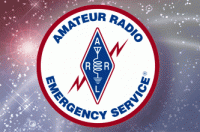|
Welcome,
Guest
|
TOPIC:
Digital Comms Innovator CT ARES @ Blizzard 2015 9 years 1 month ago #549
|
Digital Comms Innovator Connecticut ARES Active for Blizzard of 2015
The state of Connecticut was hard hit in the January 2015 North American blizzard, a powerful nor'easter that ended up hurting Canada and the middle and eastern portions of the US. Transportation was affected, and snow emergencies were declared in six states with travel bans enacted in four of these states, including Connecticut. Eastern Connecticut appeared to be the "winner" with regard to snowfall totals in the massive storm. Two Red Cross shelters in the state's Region 4 (encompassing roughly the eastern third of the state) were staffed by Amateur Radio operators, according to reports by Section Emergency Coordinator Wayne Gronlund, N1CLV. SKYWARN coordinators and spotters collected and reported weather data for the National Weather Service (NWS) during this storm. "This activation provided another excellent opportunity to make use of the new CT-ARES DMR Network," reported Gronlund. "Increased usage of this powerful statewide communications resource is expected in the future." The ARRL Connecticut Section, under the helm of a number of dynamic leaders such as Gronlund and veteran Section Manager Betsey Doane, K1EIC, has worked hard to develop new technologies for applications in ARES and other sectors of the section, while preserving the best of the older, tried and true ones such as packet radio. CT ARES provides recommendations and documentation in digital/data communications for general Amateur Radio operations, public service, and emergency communication. ARES members are encouraged to become more familiar with digital/data communications including doing their own experimentation and development. Packet radio remains a vital communication technique for digital/data communication. "While digital/data communication modes continue to evolve, we recognize that packet radio will be one of the user links into any digital data radio system for many years to come." The data technologies available to Connecticut partner agencies in the state include Flexnet/FBB and Winlink 2000 (WL2K). The Flexnet/FBB system can handle text-only messages, NTS traffic, and bulletins. The WL2K system is more e-mail based, allowing for file attachments such as SITREPS (situation reports). All state emergency management regional offices can access the WL2K server in Westbrook through 100% RF links connecting the ten W1SP WL2K RMS Gateways. This means they can exchange messages even if all Internet connections are down. Flexnet/FBB and WL2K systems are interoperable. CT-ARES DMR DMR (Digital Mobile Radio) mode radio has been adopted by ARES in Connecticut as the primary means for command and control of ARES operations. W1SP, the Connecticut State Police Amateur Radio Club, has put up over 23 UHF linked repeaters around the state and several additional clubs have linked their UHF repeaters to the net as well. It is now practical for ARES members to coordinate their efforts from almost anywhere in the state using a handheld DMR radio. CT-ARES nets held on Sunday evenings at 8:30 and during recent alerts have had as many as 55 check-ins from among all five state regions as of February 2015. The most commonly used talk-groups are CT-ARES Statewide, CT Tactical 1-5 and 11-15, and local. A receive-only talk-group, ARES ALERT MSG, will override all other talk-groups on the network's repeaters so ARES can announce emergency activations and nets. Mode Basics To use DMR, hams need radios capable of decoding the DMR signals. As of today, the least expensive DMR radio that will work on the CT-ARES network is the Connect Systems model CS700, at around $200. This is a hand-held, 4 watt UHF radio capable of both traditional analog UHF and DMR-ETSI modes. There are other brands of DMR radios available, notably Hytera and Motorola. These are substantially more expensive, but have more sophisticated features such as the ability to automatically "roam" by detecting and switching to whichever repeater has the strongest signal. (DMR-ETSI is an open European standard for digital radio, which is compatible with the Motorola "Mototrbo" system). To get started in DMR, apply to www.dmr-marc.net for a unique subscriber ID number, which will be listed in a public database with your call sign and first name, allowing other DMR radio users to identify you when you press PTT. Hams will need to program the radio with Contacts, Zones, Color Codes, Time Slots, Receive Groups and more. Collectively, they can be saved as a data file called a "code plug" created using software available from the radio's manufacturer. Watch the CTARES website for changes to the repeaters in the net, talk-groups, programming tips, and word of in-person seminars on how to program radios. [The above information on DMR is from the ARRL Connecticut ARES Region 3 website, Region 3 DEC George Lillenstein, AB1GL, and Assistant DEC Bill Storey, AB1LZ]. Source: www.arrl.org/ares-el?issue=2015-03-18 |
|
Please Log in or Create an account to join the conversation. |
Time to create page: 0.138 seconds
